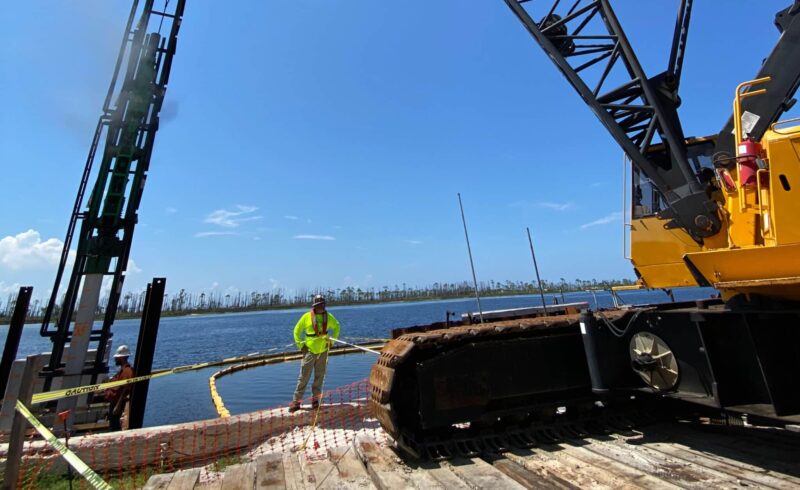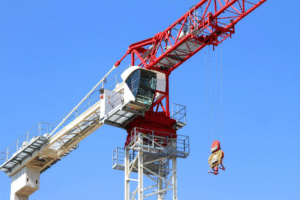
As coastal populations grow and climate challenges intensify, the role of marine construction has become more critical than ever. This specialized field addresses the design, development, and maintenance of structures built in marine and coastal environments. From industrial ports to shoreline stabilization systems, these projects form the backbone of waterfront infrastructure. Among the core solutions are marine bulkheading construction marine construction services, which are essential in creating strong, long-lasting barriers against erosion and water intrusion. These services directly support the stability and usability of coastal developments.
Foundations for Coastal Infrastructure
Marine construction serves as a foundational pillar in the development and reinforcement of critical infrastructure systems. Projects often involve building harbors, terminals, bridges, causeways, and utility systems that connect inland regions with maritime routes. These developments support the movement of goods, fuel economic activity, and contribute to national and global supply chains.
Key components of this infrastructure include:
-
Bulkheads and Retaining Walls
These structures help define property boundaries, stabilize soil, and protect inland assets from tides and wave action.
-
Wharves and Terminals
Used for the handling of commercial cargo and passenger transport, they are integral to trade and transportation networks.
-
Underwater Pipelines and Cables
Installed for energy distribution and data transmission, they require precise marine engineering to ensure safety and function.
-
Marine Foundations
Piling and substructure work is vital for offshore wind farms, oil rigs, and coastal buildings that need deep anchoring.
Marine construction not only involves heavy equipment and skilled labor but also calls for meticulous planning to account for water movement, corrosion risks, and variable sea levels.

Adapting to Environmental Forces
Coastal infrastructure must be engineered to endure the rigors of extreme and unpredictable environmental forces. Rising sea levels, stronger storms, and increased tidal activity place new demands on construction materials and techniques. Durability, flexibility, and the ability to absorb or deflect energy from waves are now key design considerations.
Engineers are increasingly employing dynamic and adaptiuve structures. For instance, tidal gates can help manage water flow during storm surges, while flexible barriers can be deployed or retracted as needed. Materials such as marine-grade concrete, composite piles, and corrosion-resistant alloys extend the life span of structures exposed to saltwater.
Resilience and Risk Management
Resilience stands as one of the most critical and pressing imperatives in the realm of coastal construction. An extensive number of coastal regions are burdened by the dual and escalating challenges of inundation and the gradual deterioration of shorelines. This vulnerability requires proactive risk management strategies embedded in the construction process. Marine construction services provide solutions that not only address immediate structural needs but also anticipate long-term environmental changes.
Projects are often guided by climate data, floodplain maps, and erosion forecasts. Designs may include elevated platforms, setback zones, and natural buffers. The goal is to reduce the frequency and impact of disruptions while ensuring that critical services—such as transport, water, and energy—remain uninterrupted during extreme events.
Regulatory Compliance and Project Planning
Marine infrastructure projects are governed by strict regulatory frameworks. These include local, national, and international laws that govern marine ecosystems, coastal access, and environmental protection. Permits are often required for dredging, land reclamation, and any activities affecting water flow or sediment transport.
A successful marine construction project integrates compliance into every stage—design, procurement, and execution. Early coordination with environmental agencies and local authorities can help avoid delays and ensure alignment with sustainability goals.
Advancing Toward Sustainable Development
Sustainability is gaining prominence in marine construction. Developers and engineers are now incorporating “green” solutions that enhance resilience while protecting natural habitats. Living shorelines, permeable seawalls, and eco-concrete structures that promote marine biodiversity are just a few examples.
Technological advancements, such as drone surveys, 3D modeling, and AI-based monitoring systems, are also improving the efficiency and accuracy of marine construction projects. These tools allow for real-time decision-making and adaptive management of construction timelines and materials.
In summation, marine construction is instrumental in sculpting coastal infrastructure that is resilient, operationally robust, and environmentally sustainable. From cargo ports to shoreline protection, each project is a complex balance of engineering precision and environmental stewardship. Within this landscape, marine bulkheading construction marine construction services continue to serve as a cornerstone for safe and reliable development along the water’s edge.







